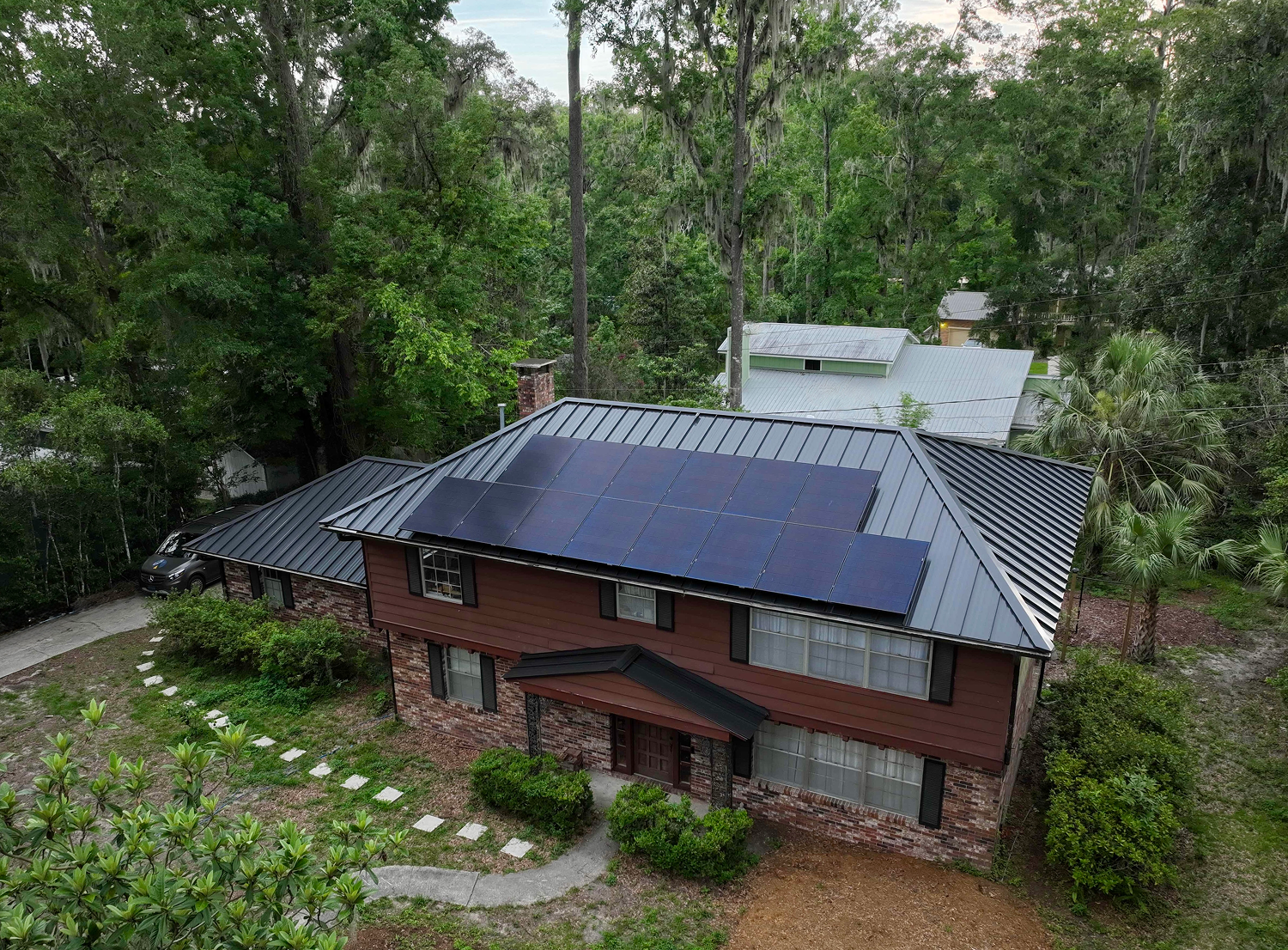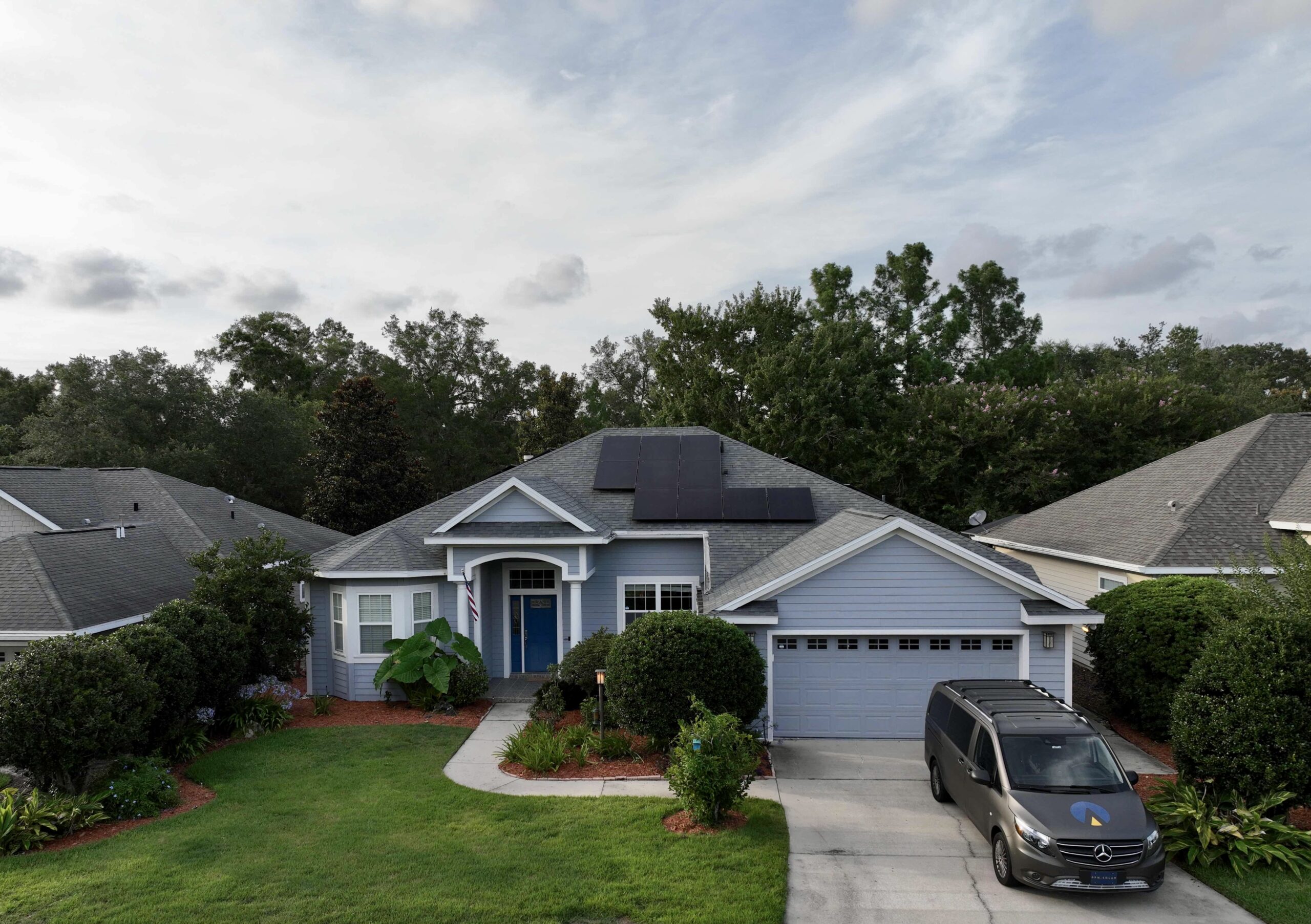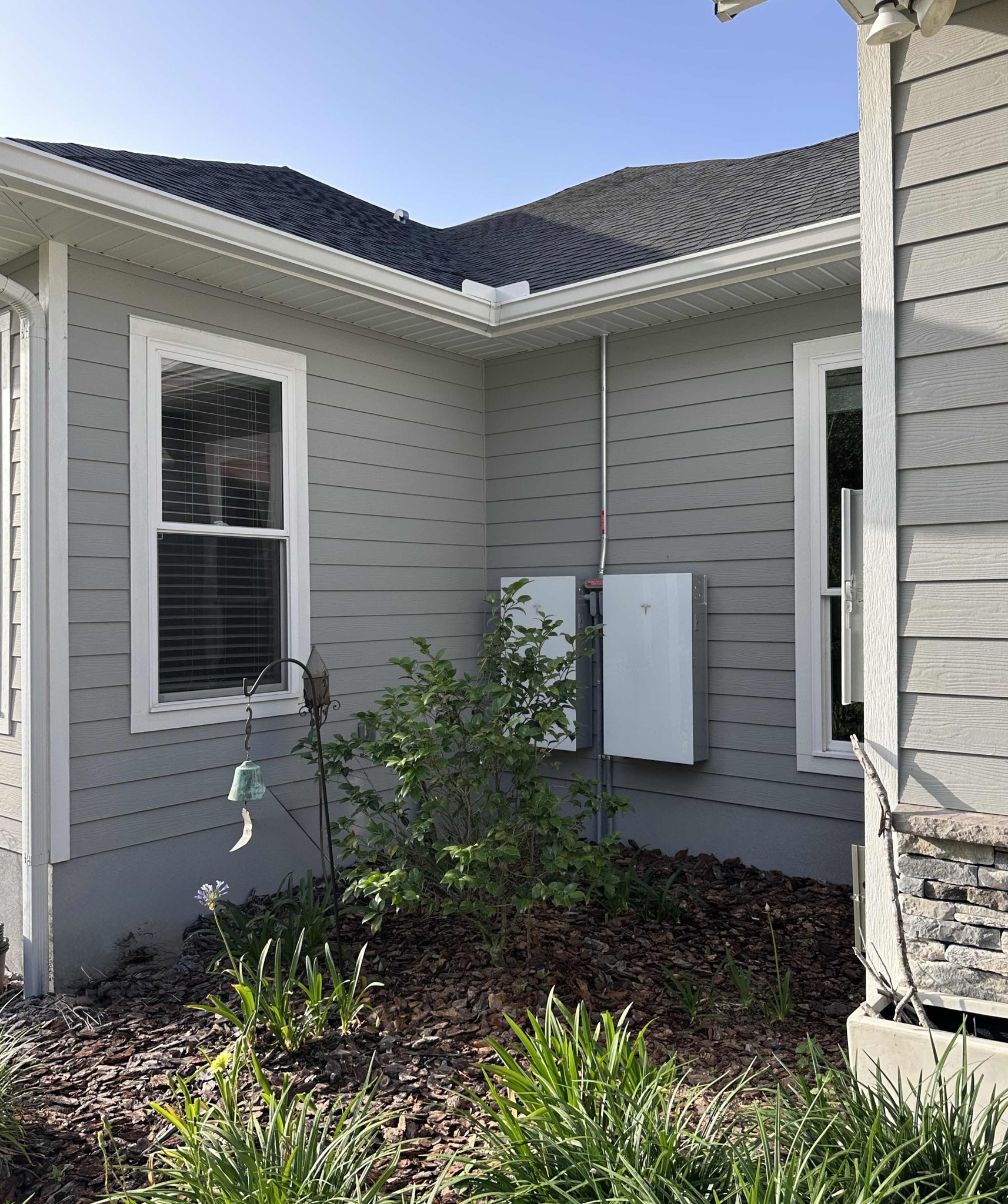Solar companies are closing at record rates in 2025, yet demand for clean energy keeps growing. Major installers like SunPower filed for bankruptcy last year, creating a serious problem for homeowners who invested in solar systems.
The numbers tell a stark story. A staggering 75% of solar companies are now facing financial trouble. This creates real risk for homeowners because solar systems represent substantial investments—anywhere from $40,000 to over $200,000 depending on system size. When your installer shuts down, you lose access to warranty service, monitoring portals, and technical support for equipment designed to run 25-30 years.
Your solar panels will keep producing electricity even if your installer goes out of business. The difference between protecting your investment and losing control comes down to one thing: maintaining visibility into how your system performs.
This article explains why solar companies are failing, what you lose when your installer disappears, and how solar system monitoring becomes your most important protection against these industry problems.
With solar companies under financial stress and major installers like SunPower filing bankruptcy, protecting your solar investment requires proactive monitoring strategies.
- Solar monitoring becomes your lifeline when installers fail – active solar system monitoring costs only $5-$30 monthly but protects investments worth $40,000-$200,000
- Bankruptcy voids installer warranties and cuts monitoring access – you lose workmanship coverage, system data, and repair support when companies shut down
- Early detection prevents costly repairs – monitoring systems send immediate alerts about performance drops, catching issues before they escalate into expensive problems
- Your panels keep working even without original installer support – systems continue generating electricity for 25-30 years, making independent monitoring essential for long-term success
- Third-party solutions restore control over your investment – compatible monitoring apps and certified service providers can replace bankrupt installer services effectively
The key is establishing monitoring independence before your installer disappears, ensuring continuous visibility into your system’s performance and protecting your substantial clean energy investment.
Why solar companies are going out of business in 2025–2026
The solar industry is facing a perfect storm of challenges that’s driving companies out of business at unprecedented rates. Understanding these problems helps you prepare for potential disruptions to your solar investment.
High borrowing costs and reduced consumer demand
Interest rates have soared to multi-decade highs since 2023, and renewable energy projects are getting hit particularly hard because they require massive upfront capital. Here’s what this means in practical terms: a mere two-percentage-point increase in interest rates raises the cost of solar electricity by up to 20%.
The results speak for themselves. Residential solar projects decreased by 19% in 2024, while average monthly payments for solar loans increased by 13% year-over-year. The first quarter of 2025 saw residential solar installations reach their lowest point since Q3 2021.
Labor shortages and supply chain delays
The solar workforce cannot keep up with demand, creating a bottleneck that’s strangling growth. The Bureau of Labor Statistics estimates worker numbers will grow by only 22% by 2033—far below the 48% increase the industry actually needs. The shortage of highly-skilled electrical technicians is particularly acute.
These workforce challenges contributed to approximately 53 GW of solar projects being delayed in 2024. Meanwhile, supply chain disruptions continue to create havoc. Polysilicon shortages have caused solar prices to surge, while shipping costs from China—where most panels are manufactured—have increased roughly six-fold from pre-pandemic levels.
Policy uncertainty and incentive rollbacks
Government policy changes are creating massive uncertainty in the market. The One Big Beautiful Bill (OBBB) requires commercial projects to either complete construction by the end of 2027 or begin within 9 months to qualify for tax credits. Even more concerning, the residential solar tax credit will be eliminated after 2025, resulting in a 22% downgrade to the residential solar outlook.
California’s NEM 3.0 policy shows how quickly policy changes can destroy market demand. The implementation led to an 82% decline in solar connection applications, demonstrating the dramatic impact regulatory shifts can have on market viability.
Examples: SunPower, Titan Solar, Pink Energy
Several major companies have already fallen victim to these pressures:
- SunPower: Filed for Chapter 11 bankruptcy in August 2024 after losing $227 million the previous year
- Titan Solar Power: Ceased operations in June 2024, with liabilities between $1-10 million
- Pink Energy: Abruptly closed in 2022, leaving nearly $140 million in debt and up to 50,000 creditors
- Sunnova Energy, Solar Mosaic, Sunworks, Inc, to name even more.
For homeowners with systems installed by these companies, solar system monitoring becomes essential for maintaining system performance without installer support.
What you lose when your installer goes bankrupt
Solar installer bankruptcy creates immediate problems that go far beyond losing a phone number to call. Understanding these specific losses helps you protect your investment before problems arise.
Installer warranties and service agreements
Your workmanship warranty disappears the moment your installer closes shop. This warranty covers installation quality, roof penetrations, and damage from installation work—critical protections for your home. Manufacturer warranties for panels and inverters usually stay valid, but accessing them gets complicated. Manufacturers often require certified technicians to handle warranty work. Without your original installer, you need to find qualified professionals who understand the warranty claim process.
Access to monitoring portals and system data
Many homeowners lose access to their system’s performance data overnight when installer servers shut down. Your monitoring portal simply vanishes, cutting off visibility into whether your system operates properly. This information blackout can void inverter warranties and hurt production-based incentives. Some homeowners report being locked out of monitoring platforms even while their solar companies were still operating.
Support for repairs and troubleshooting
Most solar companies won’t service systems they didn’t install. The economics work against you—repair jobs generate minimal revenue compared to new installations, giving companies little reason to accept liability for another installer’s work. Minor issues become major problems without proper service support.
Risk of paying for a system that underperforms
The financial impact can be severe. Industry data shows solar systems underperform by 8% on average, but you might never know without monitoring. Some homeowners end up paying both electricity bills and solar loan payments after system failures. Your loan payments continue regardless of whether your system produces expected energy.
Solar monitoring protects your investment when installers disappear
As many solar companies close their doors in 2025–2026, PPM’s active solar system monitoring service has become one of the most reliable protections homeowners can have. Unlike app-only solutions, PPM’s active monitoring is managed by real engineers who continuously track your system’s performance, production, and health — ensuring that your solar investment keeps delivering returns, regardless of what happens to your original installer.
How PPM active solar monitoring works
At PPM, solar monitoring isn’t just software — it’s a service. Each customer’s system is connected to a dedicated monitoring platform integrated with their inverter hardware (Enphase, SolarEdge, SMA, or Tesla). The inverters collect real-time data on voltage, current, temperature, and power output from every array.
This data transmits securely through Wi-Fi, ethernet, or cellular signals to PPM’s monitoring center, where our in‑house engineers actively review system performance and set automated alerts for any anomalies or production loss.
If something unusual appears, our team intervenes manually—contacting you, diagnosing remotely, and recommending the right next step to restore optimal performance.
So while the technology runs in the background, your protection comes from PPM’s active oversight, not from a standalone app.
Why PPM’s active solar system monitoring is different
Most apps or installer portals show you what your system did yesterday. PPM’s Active Monitoring predicts what it should be doing today — and acts when those two don’t match.
When you enroll in active solar performance monitoring, you receive:
- Continuous data review: automated system analytics backed by real human oversight.
- Timely alerts: our monitoring engineers receive system notifications in real time and prioritize urgent cases.
- Performance optimization: regular efficiency reviews help you maintain top-tier system output and protect ROI.
- Comprehensive reports: transparent summaries of your monthly and annual production performance, sent directly to you.
This combination of human intelligence and advanced diagnostics keeps your system reliable even in an unstable market.
Catching performance issues before they cost you
Every solar system will experience fluctuations — dirt buildup, string faults, shading, inverter resets.
The difference with PPM’s active system monitoring is that we detect these issues before you even notice them.
When production drops or a component misbehaves, our engineers see it immediately and notify you with actionable next steps.
If the problem requires service, we coordinate inspection or maintenance to get your output back on track.
Without proactive monitoring, most homeowners only realize there’s a problem when their power bill increases — sometimes months after a system failure. PPM’s active solar monitoring eliminates that risk.
Protecting your savings and system lifespan
With consistent professional oversight, your solar panels continue performing near design capacity for decades.
Our active approach helps maintain optimal metrics such as:
- System availability: 99% uptime on monitored systems
- Performance ratio: Verified energy output matching system expectations
That level of precision directly translates to long-term financial returns, stable energy output, and validated warranty protection.
Simply put — our engineers safeguard the performance your investment depends on.
How to regain monitoring control if your installer closed
If your original solar company is no longer in business, PPM Solar can take over monitoring seamlessly.
Our team reestablishes data connections, verifies inverter communication, and adds your system to our monitoring platform.
Once onboarded, we provide:
- System health audit: technical assessment of equipment, safety, and production history.
- Reactivation & enrollment: secure configuration of your devices into the PPM Active Monitoring network.
- Ongoing oversight & reporting: daily tracking, performance alerts, and monthly reports directly from our monitoring department.
You stay connected to your system — but the vigilance happens on our side, ensuring you never lose production insight or uptime.
Long-term protection: PPM active monitoring + maintenance plans
Continuous monitoring is the foundation of a healthy solar system, but combining it with our Operations & Maintenance (O&M) plan gives you full‑spectrum protection.
Our O&M team handles:
- Scheduled performance checkups
- Physical inspections and panel cleaning
- Warranty claim coordination
- Preventive maintenance to extend system life beyond 25 years
Together, PPM’s active solar system monitoring and O&M coverage deliver complete peace of mind — your system is watched, protected, and supported by experts who know every technical detail.
Conclusion
The solar market is shifting fast — but your investment doesn’t have to.
Even as smaller installers close following the OBBB expiration, PPM Solar remains your trusted long‑term partner, combining advanced monitoring technology with real human oversight.
For as little as a few dollars per month, you gain the assurance of 24/7 professional monitoring, detailed performance reporting, and proactive issue resolution — all managed by the engineers who have kept Florida systems performing at 99% reliability for over 15 years.
Your installer may be gone, but your system deserves expert care. Enroll in PPM’s Active Monitoring today and ensure your solar power — and savings — stay strong for decades to come.
FAQs
What happens to my solar system if the installation company goes bankrupt?
Your solar panels will continue to generate electricity even if the installer goes out of business. However, you may lose access to warranties, monitoring portals, and technical support. It’s important to establish independent monitoring and find certified technicians who can service your system.
How can I monitor my solar system’s performance without the original installer?
If your original solar company is no longer in business, you don’t need to rely on third-party apps or figure things out on your own. PPM Solar can take over your system’s active monitoring directly — reconnecting your equipment to our engineer-managed monitoring platform.
Why are so many solar companies going out of business recently?
Several factors are contributing to solar company bankruptcies, including high interest rates, reduced consumer demand, labor shortages, supply chain delays, and policy uncertainties. These challenges have made it difficult for many solar businesses to remain financially viable in the current market.
Can I hire any electrician to work on my solar system if the original installer is no longer available?
While a general electrician may be able to perform some work, it’s best to find technicians specifically experienced with solar systems. Look for certified solar professionals or companies that offer service and maintenance plans for systems they didn’t install. They will be more familiar with the specific requirements of solar equipment.
How can I protect my solar investment from potential installer bankruptcies?
To safeguard your solar investment, consider implementing active monitoring solutions, purchasing solar insurance or an operations and maintenance (O&M) plan, and maintaining documentation of your system’s specifications. It’s also wise to research the financial stability of solar companies before installation and not release all funds until the system is fully operational.



